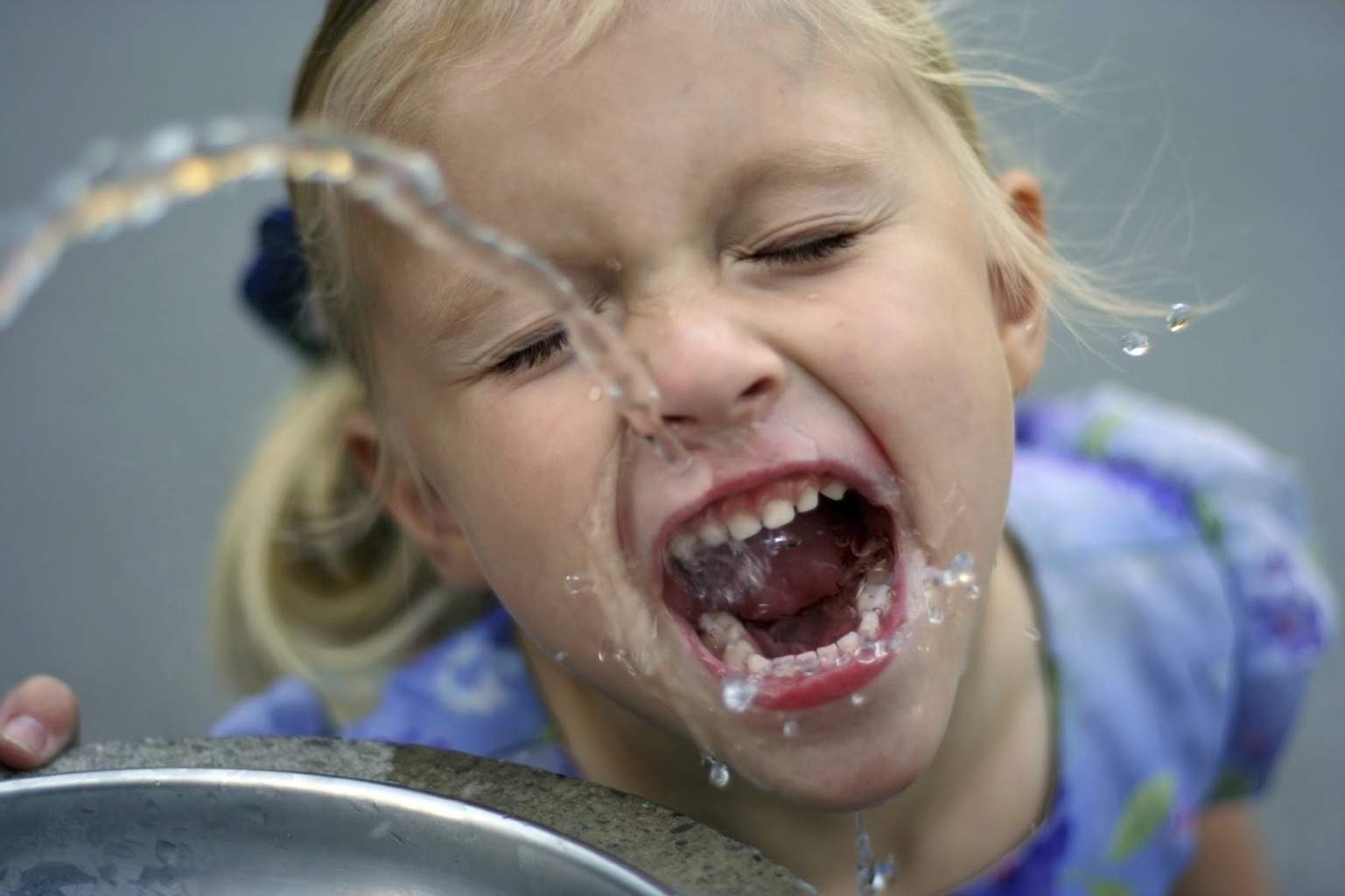It’s so easy to let certain rules ease up during the summer months. Bedtimes are a little later. Playground time lasts a little longer. As the summer sun heats up and the humidity rises, your kids will want to stay as active in the outdoors as possible, but these hot, humid months are a key time to watch our for dehydration and stop it in its tracks.
What are early signs of dehydration? If your child complains of thirst, seems a bit less interested than usual in physical activity, and urinates less frequently, make sure he gets a glass or bottle of water as soon as possible. These are mild signs, and will likely dissipate with a bit of water and some rest in the shade. But if you notice that your child is lethargic, the inside of his mouth is sticky and dry, his eyes appear dry and sunken, or he has a rapid heartrate, these are advanced signs of dehydration. Call a doctor immediately if you notice these symptoms. How to avoid noticing signs of dehydration entirely? Offer your children water before they complain of thirst. Since thirst is a sign that they are already becoming dehydrated, you’ll want to head symptoms off before they even begin.
You’ll also want ton make sure your kids are getting the right amounts of water depending on their weight and their activity level. While most kids, according to The American Academy of Pediatrics need about six glasses of water per day, those requirements change when kids are active outdoors. If your child is 88 pounds, she shoul drink 6 ounces of water every 30 minutes during activity. That increases to 9 ounces for kids weighing 132 pounds. Determine where your child is on that scale, and adjust their water consumption accordingly. And yes, we know that fruit juice, soda, and sports drinks are popular alternatives to water, but water is the ideal beverage for hydrating kids. Juice, soda, and sports drinks are high in refined and processed sugars, and caffeinated varieties act as diuretics, worsening dehydration.
You can feel free to supplement your children’s diet with foods that are naturally rich in water, and good for them overall, too! Watermelons are 92% water, and contain lycopene, as well as numerous other antioxidants. Puree watermelon and freeze it for some delicious popsicles with no added or refined sugars. Strawberries are another great source of nutrition. They are 91% water, and contain both vitamin C and folate. You’ll be hard pressed to find a kid who isn’t thrilled to munch on a bowl of strawberries or a plate of watermelon slices. Veggies are often hydrating as well. In fact, cucumbers are one of the foods highest in water, at 95%. Most salad greens clock in at 90%. Do your kids shy away from the green stuff? Pair cucumbers with tomato, watermelon, and feta cheese for a fruity salad kids love, or a make a spinach salad with strawberries and almonds that will change the way your kids look at salads. Choose organic veggies for options that are free of pesticides, richer in nutrients than their non-organic counterparts, and are environmentally friendly. Pack these fruits and veggies in your child’s lunch when you send him off to daycare or preschool, and the combo of the cool water he’ll be drinking throughout the day, and these hydrating snacks, will keep him energized and safe.
Make sure your kids enjoy each and every summer day by paying attention to early signs of dehydration, and trying to head them off at the pass with frequent water and snack breaks. While your children may not want to come down from the monkey bars every once in a while, remind them that water, fruits, and veggies will fuel them and keep them playing for hours on end!

